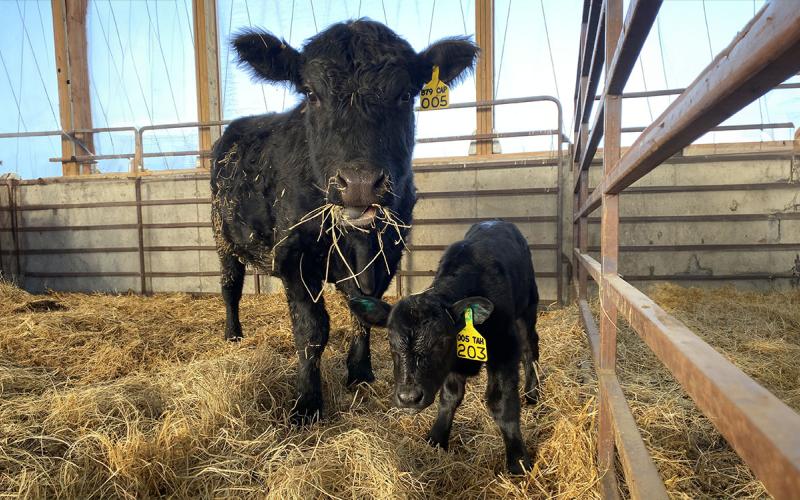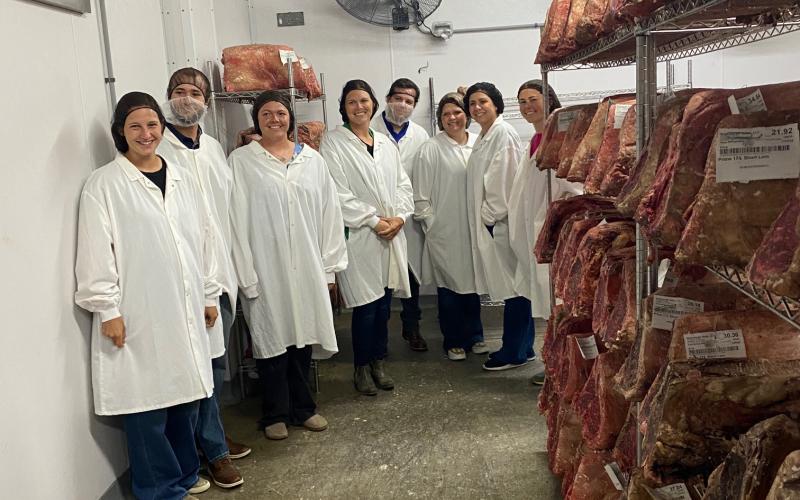
Confusion and concern often surround the use of hormones in beef production. These “chemical messengers” are substances produced in the body that travel through the bloodstream to regulate body functions such as reproduction, metabolism, and growth. Hormones such as estrogens or androgens are often administered to growing cattle intended for slaughter to promote growth by complementing the effects of naturally occurring hormones. These growth-promoting hormones are generally administered to cattle in the form of small pellets, termed ‘implants’, that are placed under the skin in the animal’s ear. The boost in growth rate created by hormone implants allows for cattle to be finished earlier thereby requiring less time on feed and fewer resources per pound of meat produced.
A common myth surrounding beef produced with additional hormones is that it is unsafe to consume. The fact is that the U.S. Food and Drug Administration regulates the development and use of hormone implants and the Food Safety Inspection Service of the USDA routinely monitors residues of synthetic hormones in meat.
Estrogenic Activity in Beef
It is true that beef from hormone-implanted cattle has increased estrogenic activity compared with non-implanted beef. This fact alone may alarm beef consumers, but it must be put into the context of actual amount consumed and the levels found in other products. As shown in Table 1, beef from a non-implanted steer contains 0.85 units of estrogenic activity per 3 oz. serving, while beef from an implanted steer contains 1.2 units of estrogenic activity in the same serving. However, this amount is a fraction of what is found in many other common foods. For example, the same quantity of eggs would provide 94 units of estrogenic activity and a 3 oz. serving of tofu would provide 19,306,004 units of estrogenic activity. In fact, a normal adult male produces 136,000 ng of estrogen per day while a non-pregnant woman produces 513,000 ng/day on average, making consumption of the levels of estrogen in implanted beef relatively inconsequential.
| Food | Estrogenic Activity |
|---|---|
| Soy flour (defatted) | 128,423,201 |
| Tofu | 19,306,004 |
| Pinto beans | 153,087 |
| White bread | 51,029 |
| Peanuts | 17,010 |
| Eggs | 94 |
| Milk | 5.4 |
| Beef from implanted steer | 1.2 |
| Beef from non-implanted steer | 0.85 |
1Units are nanograms of estrone plus estradiol for animal products and isoflavins for plant products per 3 oz of food.
Hoffman and Eversol (1986), Hartman et al. (1998), Shore and Shemesh (2003), USDA-ARS (2002). Adapted from: Loy, 2011
Guidelines for Consumers
It is also important to understand that there is no such thing as “hormone-free” beef. As stated above, hormones are naturally occurring and if they were eliminated completely from the body the animal could not survive. Therefore, any amount of beef (or any animal product for that matter) will have some level of naturally occurring hormone present. There are products available from beef that have not been administered additional hormones. Claims such as “no added hormones administered” or “raised without added hormones” may be approved for use on the label of beef products if sufficient documentation is provided to the USDA-Food Safety Inspection Service showing no hormones were used in raising the animals. Also, beef labeled “organic” is not administered implants and must adhere to the USDA guidelines for organic beef production. As implants reduce the cost of production consumers should expect to pay a premium for products carrying these labels.
More information about hormones in beef production is available at Meat Mythcrushers, as well as information about other common myths in the meat industry.


